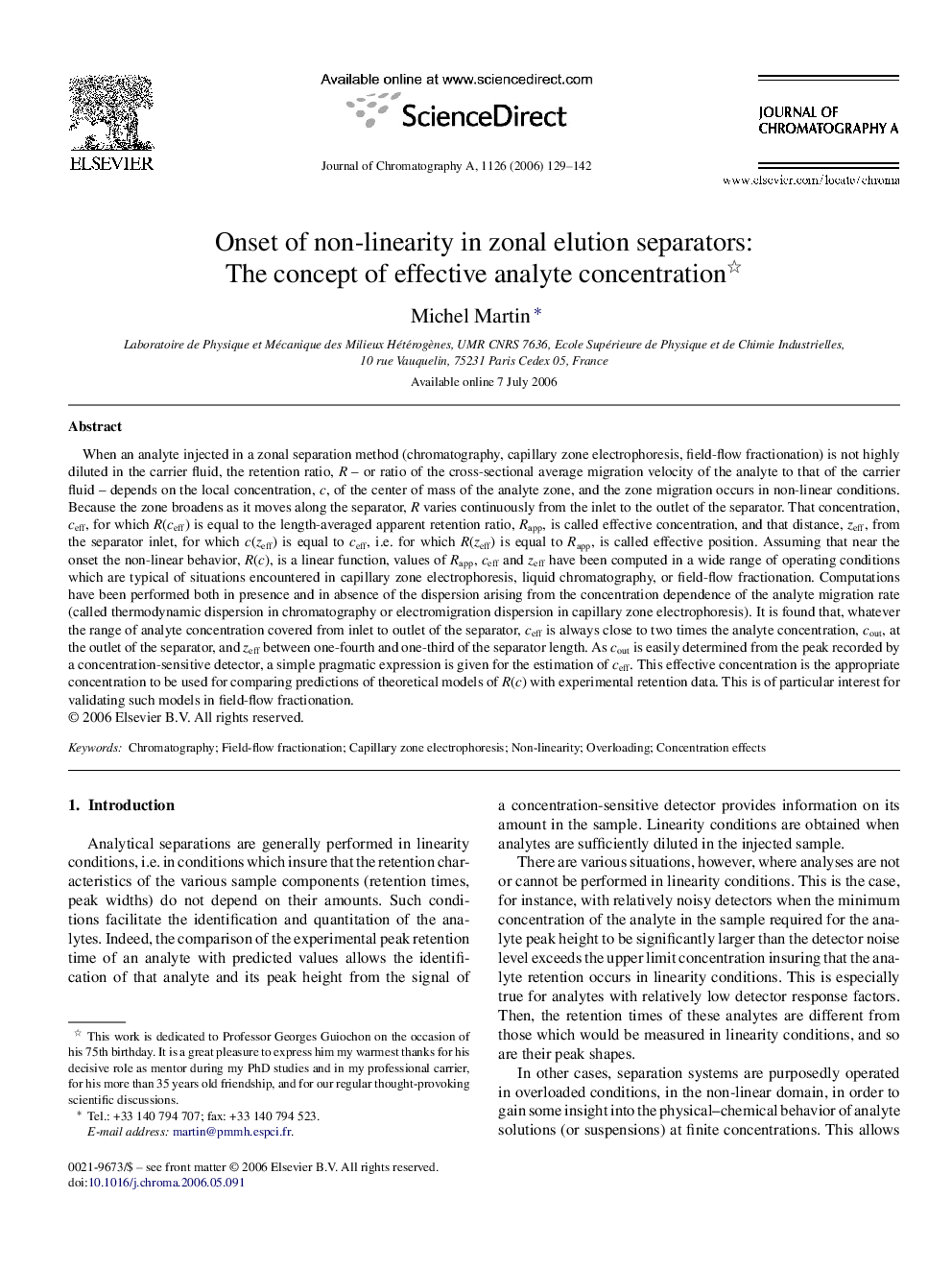| Article ID | Journal | Published Year | Pages | File Type |
|---|---|---|---|---|
| 1209873 | Journal of Chromatography A | 2006 | 14 Pages |
When an analyte injected in a zonal separation method (chromatography, capillary zone electrophoresis, field-flow fractionation) is not highly diluted in the carrier fluid, the retention ratio, R – or ratio of the cross-sectional average migration velocity of the analyte to that of the carrier fluid – depends on the local concentration, c, of the center of mass of the analyte zone, and the zone migration occurs in non-linear conditions. Because the zone broadens as it moves along the separator, R varies continuously from the inlet to the outlet of the separator. That concentration, ceff, for which R(ceff) is equal to the length-averaged apparent retention ratio, Rapp, is called effective concentration, and that distance, zeff, from the separator inlet, for which c(zeff) is equal to ceff, i.e. for which R(zeff) is equal to Rapp, is called effective position. Assuming that near the onset the non-linear behavior, R(c), is a linear function, values of Rapp, ceff and zeff have been computed in a wide range of operating conditions which are typical of situations encountered in capillary zone electrophoresis, liquid chromatography, or field-flow fractionation. Computations have been performed both in presence and in absence of the dispersion arising from the concentration dependence of the analyte migration rate (called thermodynamic dispersion in chromatography or electromigration dispersion in capillary zone electrophoresis). It is found that, whatever the range of analyte concentration covered from inlet to outlet of the separator, ceff is always close to two times the analyte concentration, cout, at the outlet of the separator, and zeff between one-fourth and one-third of the separator length. As cout is easily determined from the peak recorded by a concentration-sensitive detector, a simple pragmatic expression is given for the estimation of ceff. This effective concentration is the appropriate concentration to be used for comparing predictions of theoretical models of R(c) with experimental retention data. This is of particular interest for validating such models in field-flow fractionation.
